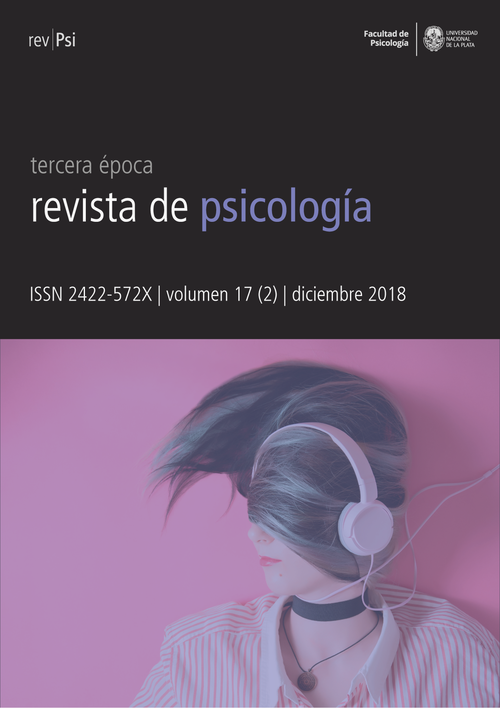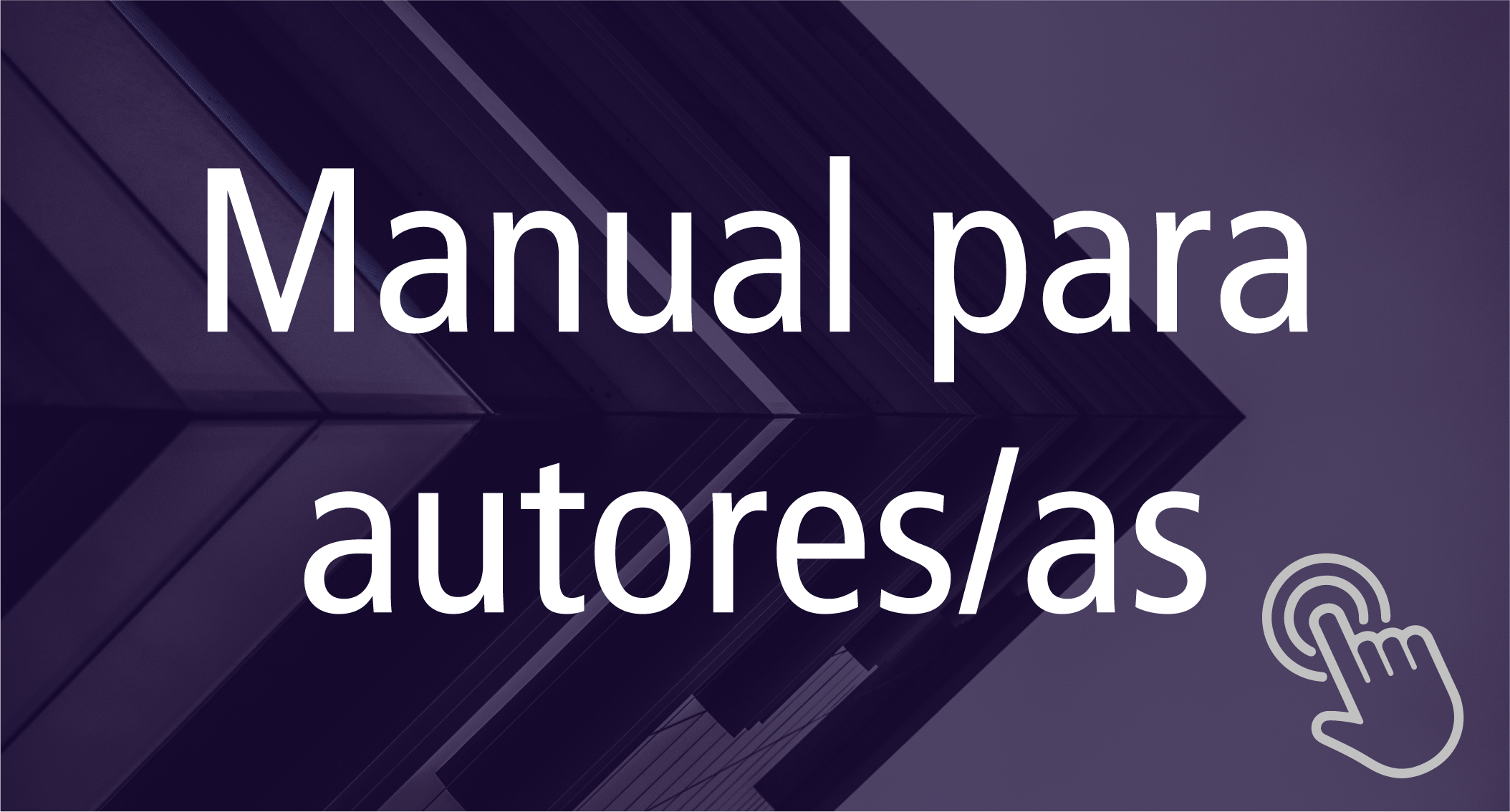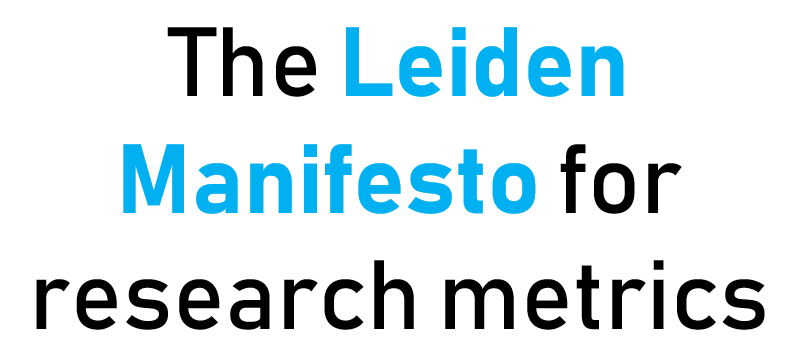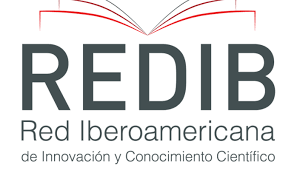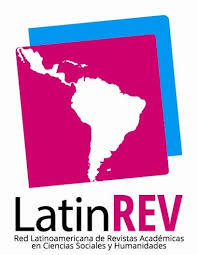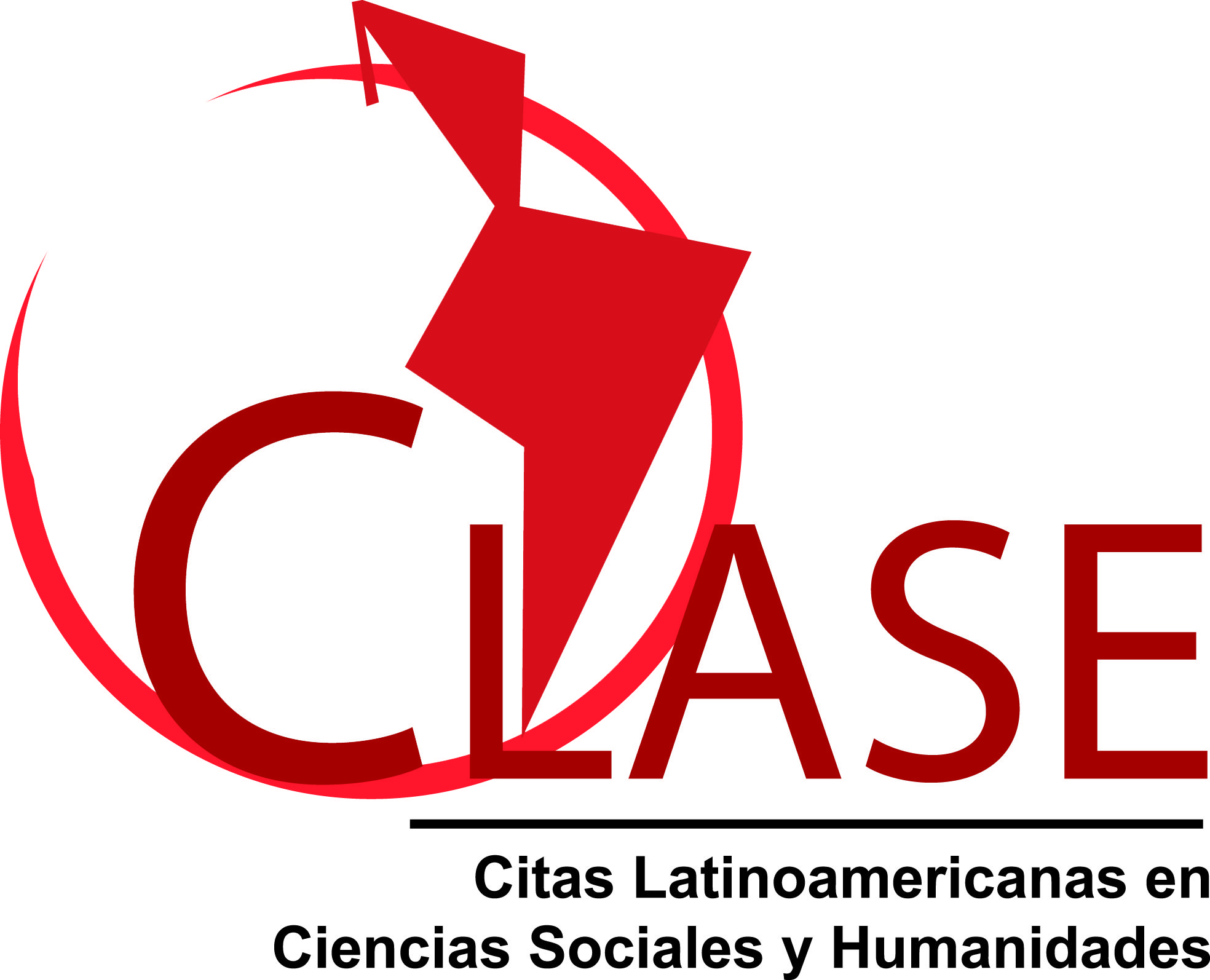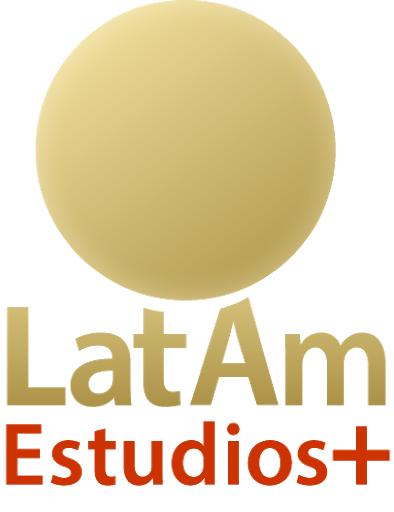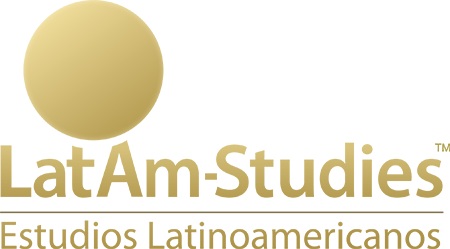Energía musical expresada. Patrones enactivos de música y movimiento desde la perspectiva de segunda persona
DOI:
https://doi.org/10.24215/2422572Xe021Palabras clave:
movimiento expresivo, expresión musical, enactivismo, interacción, tecnologías de mediaciónResumen
Este trabajo evaluó la correlación entre patrones de movimiento y de música, entendidos como energía cinética y sonora, modulada por intenciones expresivo-comunicativas y descritos desde los marcos teóricos de la cognición enactiva y la expresión musical. Se discutió la pertinencia epistemológica para la selección de las categorías de análisis puente en distintos niveles de conceptualización. Se estudió una performance musical que incluye el rol de un director por su contexto de interacción musical privilegiado para analizar la expresión de significados musicales y su referencia corporeizada manifiesta. La metodología conjugó un abordaje cuantitativo basado en tecnologías de mediación y una interpretación cualitativa de los datos. Los resultados de los correlatos obtenidos fueron positivos en varias de las categorías propuestas. Estos resultados brindan una comprensión adicional sobre los modos en que se vincula la energía musical expresada en el interdominio sonoro-cinético desde la perspectiva interactiva y comunicacional dada en una performance musical.
Descargas
Métricas
Citas
Billingham, L. A. (2009). The complete conductor’s guide to Laban movement theory. Chicago: GIA Publications.
Burger, B. y Toiviainen, P. (2013). MoCap toolbox – A matlab toolbox for computational analysis of movement data. En R. Bresi (Ed.), Proceedings of the 10th Sound and Music Computing Conference (pp. 172-178). Estocolmo: KTH Royal Institute of Technology.
Cadoz, C. y Wanderley, M. M. (2000). Gesture - music. En M. M. Wanderley y M. Battier (Eds.), Trends in gestural control of music (pp. 71-93). París: IRCAM. Recuperado a partir de https://hal.archives-ouvertes.fr/hal-01105543/document
Camurri, A., De Poli, G., Leman, M. y Volpe, G. (2001, noviembre). A multi-layered conceptual framework for expressive gesture applications. Presentado en MOSART: Workshop on Current Directions in Computer Music, Barcelona.
Camurri, A., Lagerlöf, I. y Volpe, G. (2003). Recognizing emotion from dance movement: Comparison of spectator recognition and automated techniques. International Journal of Human-Computer Studies, 59(1-2), 213-225. https://doi.org/10.1016/S1071-5819(03)00050-8
Camurri, A., Ricchetti, M., Timmers, R., Volpe, G. y Volpe, G. (2003). Multimodal analysis of expressive gesture in music and dance performances. En A. Camurri y G. Volpe (Eds.), Gesture-based communication in human-computer interaction (pp. 20-39). Berlin, Heidelberg: Springer.
Cannam, C., Landone, C. y Sandler, M. (2010). Sonic visualiser: An open source application for viewing, analysing, and annotating music audio files. En A. Del Bimbo y S.-F. Chang (Eds.), Proceedings of the 18th ACM International Conference on Multimedia (MM’05) (pp. 1467-1468). Nueva York: ACM Press. https://doi.org/10.1145/1873951.1874248
Cook, N. (2003). Music as performance. En M. Clayton, H. Trevort, y M. Richard (Eds.), The cultural study of music: A critical introduction (pp. 204-214). Nueva York/Londres: Routledge.
Damasio, A. (1999). The feeling of what happens: Body and emotion in the making of consciousness. San Diego: Mariner Books.
Damesón, J. y Martínez, I. C. (2015). Dirección en 3D: La dimensión oculta del significado. En I. C. Martínez, A. Pereira-Ghiena, M. Valles, M. Tanco, y M. I. Burcet (Eds.), Actas de ECCoM. Vol. 2 Nº 2, “La experiencia musical: cuerpo, tiempo y sonido en el escenario de nuestra mente. 12o ECCoM” (pp. 42-52). Buenos Aires: SACCoM - Sociedad Argentina para las Ciencias Cognitivas de la Música.
Delalande, F. (1988). Le geste, outil d’analyse: Quelques enseignements d’une recherche sur la gestique de Glenn Gould. Analyse Musicale, 1, 43-46.
Demaree, R. W. y Moses, D. V. (1995). The complete conductor: A comprehensive resource for the professional conductor of the twenty-first century. New Jersey: Prentice-Hall.
Di Paolo, E., Buhrmann, T. y Barandiaran, X. (2017). Sensorimotor life: An enactive proposal. Oxford: Oxford University Press.
Eitan, Z. (2013). How pitch and loudness shape musical space and motion. En S.-L. Tan, A. J. Cohen, S. D. Lipscomb, y R. A. Kendall (Eds.), The psychology of music in multimedia. Oxford: Oxford University Press.
Español, S. (2007). La elaboración del movimiento entre el bebé y el adulto. En M. Jaquier y A. Pereira-Ghiena (Eds.), Actas de la VI Reunión de SACCoM, «Música y Bienestar Humano» (pp. 3-12). Buenos Aires: SACCoM - Sociedad Argentina para las Ciencias Cognitivas de la Música.
Español, S. (2008). La entrada al mundo a través de las artes temporales. Estudios de Psicología, 29(1), 81-101. https://doi.org/10.1174/021093908783781428
Español, S. (2010). Performances en la infancia: Cuando el habla parece música, danza y poesía. Epistemus. Revista de Estudios en Música, Cognición y Cultura, 1(1), 57-95. https://doi.org/10.21932/epistemus.1.2702.0
Español, S. (2014). La forma repetición-variación. Una estrategia para la reciprocidad. En S. Español (Ed.), Psicología de la música y del desarrollo (pp. 157-187). Buenos Aires: Paidós.
Español, S. y Shifres, F. (2015). The artistic infant directed performance: A mycroanalysis of the adult’s movements and sounds. Integrative Psychological and Behavioral Science, 49(3), 371-397. https://doi.org/10.1007/s12124-015-9308-4
Fdili-Alaoui, S., Françoise, J., Schiphorst, T., Studd, K. y Bevilacqua, F. (2017). Seeing, sensing and recognizing Laban movement qualities. En G. Mark y S. Fussell (Eds.), Proceedings of the 2017 CHI Conference on Human Factors in Computing Systems (pp. 4009-4020). Nueva York: ACM Press. https://doi.org/10.1145/3025453.3025530
Françoise, J. (2015). Motion-sound mapping by demostration (tesis doctoral inédita). Université Pierre et Marie Curie, Francia.
Gallagher, S. (2005). How the body shapes the mind. Oxford: Oxford University Press.
Gallese, V. (2001). The «shared manifold» hypothesis. Journal of Consciousness Studies, 8(5-7), 33-50.
Giraud, T., Focone, F., Isableu, B., Martin, J.-C. y Demulier, V. (2016). Impact of elicited mood on movement expressivity during a fitness task. Human Movement Science, 49, 9-26. https://doi.org/10.1016/j.humov.2016.05.009
Gomila, A. (2010). Música y emoción. El problema de la expresión y la perspectiva de segunda persona. En M. J. Alcaraz y F. Pérez Carreño (Eds.), Significado y expresión en la música (pp. 193-216). Madrid: Machado Libros.
Hatten, R. S. (2004). Interpreting musical gestures, topics, and tropes: Mozart, Beethoven, Schubert. Bloomington/Indianapolis: Indiana University Press.
Hatten, R. S. (2006). A theory of musical gesture and its application to Beethoven and Schubert. En A. Gritten y E. King (Eds.), Music and gesture (pp. 1-23). Hampshire/Burlington: Ashgate Publishing, Ltd.
Jensenius, A. R., Wanderley, M. M., Godøy, R. I. y Leman, M. (2010). Musical gestures: Concepts and methods in research. En R. I. Godøy y M. Leman (Eds.), Musical gestures: Sound, movement, and meaning (pp. 12-35). New York: Routledge. https://doi.org/10.4324/9780203863411
Johnson, M. (1987). The body in the mind: The bodily basis of meaning, imagination, and reason. Chicago/Londres: University of Chicago Press.
Jordan, J. M. (1986). The effects of informal movement instruction derived from the theories of Rudolf Laban upon the rhythm performance and discrimination of high school students (tesis doctoral inédita). Temple University, Philadelphia.
Jordan, J. M. (1996). Evoking sound: Fundamentals of choral conducting and rehearsing. Chicago: Gia Publications.
Jordan, J. M., Wyers, G. y Andrews, M. (2011). The conductor’s gesture: A practical application of Rudolf Von Laban’s movement language. Chicago: Gia Publications.
Laban, R. (1971). El dominio del movimiento. (J. Bonso, Trad.). Caracas: Editorial Fundamentos.
Laban, R. (1974). The language of movement: A guidebook to choreutics. Boston: Plays Inc.
Laban, R. y Lawrence, F. C. (1947). Effort. Londres: Macdonald & Evans.
Lakoff, G. y Johnson, M. (1999). Philosophy in the flesh. New York: Basic books.
Larson, S. (2012). Musical forces: Motion, metaphor, and meaning in music. Bloomington: Indiana University Press.
Lartillot, O., Toiviainen, P. y Eerola, T. (2008). A Matlab toolbox for music information retrieval. En C. Preisach, H. Burkhardt, L. Schmidt-Thieme, y R. Decker (Eds.), Data analysis, machine learning and applications (pp. 261-268). Berlin, Heidelberg: Springer. https://doi.org/10.1007/978-3-540-78246-9_31
Leman, M. (2008). Embodied music cognition and mediation technology. Cambridge/Londres: MIT Press.
Leman, M. (2016). The expressive moment: How interaction (with music) shapes human empowerment. Cambridge/Londres: MIT press.
Lerdahl, F. (1996). Calculating tonal tension. Music Perception: An Interdisciplinary Journal, 13(3), 319-363. https://doi.org/10.2307/40286174
Lerdahl, F. y Jackendoff, R. S. (1983). A generative theory of tonal music. Cambridge/Londres: MIT press.
Lesaffre, M. (2006). Music information retrieval: Conceptual framework, annotation and user behaviour (tesis doctoral inédita). Ghent University, Bélgica.
Luck, G., Toiviainen, P. y Thompson, M. R. (2010). Perception of expression in conductors’ gestures: A continuous response study. Music Perception: An Interdisciplinary Journal, 28(1), 47-57. https://doi.org/10.1525/mp.2010.28.1.47
Maes, P.-J., Dyck, E. V., Lesaffre, M., Leman, M. y Kroonenberg, P. M. (2014). The coupling of action and perception in musical meaning formation. Music Perception: An Interdisciplinary Journal, 32(1), 67-84. https://doi.org/10.1525/mp.2014.32.1.67
Maiese, M. (2011). Embodiment, emotion, and cognition. Londres: Palgrave Macmillan. https://doi.org/10.1057/9780230297715
Malko, N. (1950). The conductor and his baton: Fundamentals of the technique of conducting. Copenhagen: Wilhelm Hansen.
Malloch, S. y Trevarthen, C. (Eds.). (2008). Communicative musicality: Exploring the basis of human companionship. Oxford: Oxford University Press.
Martínez, I. C. (2014). La base corporeizada del significado musical. En S. Español (Ed.), Psicología de la música y del desarrollo (pp. 71-110). Buenos Aires: Paidós.
Martínez, I. C., Dameson, J., Pereira-Ghiena, A. y Herrera, R. (2015). Patrones de movimiento y forma vital: Rasgos morfológicos, cinéticos y cinemáticos para su estudio. En I. C. Martinez, Pereira-Ghiena, M. Valles, M. Tanco, y M. I. Burcet (Eds.) Libro de resúmenes del 12º Encuentro de Ciencias Cognitivas de la Música "La experiencia musical: Cuerpo, tiempo y sonido en el escenario de nuestra mente" (pp. 109-111). Buenos Aires: SACCoM - Sociedad Argentina para las Ciencias Cognitivas de la Música.
Martinez, I. C. y Español, S. (2009, diciembre). Image-schemas in parental performance. Presentado en 7th Triennial Conference of European Society for the Cognitive Sciences of Music (ESCOM2009), Jyväskylä.
Martínez, I. C., Español, S. y Pérez, D. I. (2018). The interactive origin and the aesthetic modelling of image-schemas and primary metaphors. Integrative Psychological and Behavioral Science, 52(4), 646-671. https://doi.org/10.1007/s12124-018-9432-z
Martínez, I. C. y Pereira-Ghiena, A. (2015). Formas de vitalidad y ejecución expresiva. Un análisis del perfil sonoro-kinético de diferentes versiones del ‘Preludio Op. 28, 7’ de F. Chopin. En I. C. Martínez, A. Pereira Ghiena, M. Valles, M. Tanco, y M. I. Burcet (Eds.), Actas de ECCoM. Vol. 2 Nº 2, “La experiencia musical: cuerpo, tiempo y sonido en el escenario de nuestra mente. 12o ECCoM” (pp. 85-94). Buenos Aires: SACCoM - Sociedad Argentina para las Ciencias Cognitivas de la Música.
Moore, C.-L. (2009). The harmonic structure of movement, music, and dance according to Rudolf Laban: An examination of his unpublished writings and drawings. New York: Edwin Mellen Press.
Naveda, L. (2011). Gesture in samba a cross-modal analysis of dance and music from the afro-brazilian culture (tesis doctoral inédita). Ghent University, Bégica.
Naveda, L., Martínez, I. C., Damesón, J., Pereira-Ghiena, A., Herrera, R. y Ordás, M. A. (2016). Musical meter, rhythm and the moving body: Designing methods for the analysis of unconstrained body movements. En R. Kronland-Martinet, M. Aramaki, y S. Ystad (Eds.), Music, mind, and embodiment (pp. 42-57). Cham: Springer International Publishing. https://doi.org/10.1007/978-3-319-46282-0_3
Palmer, C. (1997). Music performance. Annual Review of Psychology, 48(1), 115-138. https://doi.org/10.1146/annurev.psych.48.1.115
Piana, S., Staglianò, A., Camurri, A. y Odone, F. (2013, mayo). A set of full-body movement features for emotion recognition to help children affected by autism spectrum condition. Presentado en 1st International Workshop on Intelligent Digital Games for Empowerment and Inclusion (IDGEI2013), Chania.
Poch, G. (1982). Conducting: Movement analogues through effort shape. Choral Journal, 23(3), 21.
Schiavio, A. (2015). Action, enaction, inter (en)action. Empirical Musicology Review, 9(3-4), 254-262. https://doi.org/10.18061/emr.v9i3-4.4440
Schiavio, A., Van der Schyff, D., Cespedes-Guevara, J. y Reybrouck, M. (2017). Enacting musical emotions. Sense-making, dynamic systems, and the embodied mind. Phenomenology and the Cognitive Sciences, 16(5), 785-809. https://doi.org/10.1007/s11097-016-9477-8
Shifres, F. (2007, octubre). Poniéndole el cuerpo a la música. Cognición corporeizada, movimiento, música y significado. Presentado en III Jornadas de Investigación en Disciplinas Artísticas y Proyectuales (JIDAP2007), La Plata.
Shifres, F. (2014). Algo más sobre el enlace entre la infancia temprana y música: El poder expresivo del rubato. En S. Español (Ed.), Psicología de la música y del desarrollo (pp. 21–70). Buenos Aires: Paidós.
Stern, D. N. (1985). The interpersonal world of the infant: A view from psychoanalysis and developmental psychology. New York: Basic Books.
Stern, D. N. (2010). Forms of vitality: Exploring dynamic experience in psychology, the arts, psychotherapy, and development. Oxford: Oxford University Press.
Thompson, E. y Stapleton, M. (2009). Making sense of sense-making: Reflections on enactive and extended mind theories. Topoi, 28(1), 23-30. https://doi.org/10.1007/s11245-008-9043-2
Toiviainen, P. y Erola, T. (2016). MIDI Toolbox: MATLAB tools for music research (Versión 1.1). Recuperado a partir de https://github.com/miditoolbox/1.1
Van Dyck, E., Maes, P.-J., Hargreaves, J., Lesaffre, M. y Leman, M. (2013). Expressing induced emotions through free dance movement. Journal of Nonverbal Behavior, 37(3), 175-190. https://doi.org/10.1007/s10919-013-0153-1
Varela, F., Thompson, E. y Rosch, E. (1992). The embodied mind: Cognitive science and human experience. Cambridge: MIT Press.
Volpe, G. (2003). Computational models of expressive gesture in multimedia systems (tesis doctoral inédita). Universidad de Genova, Italia.
Descargas
Publicado
Cómo citar
Número
Sección
Licencia
![]()
Los autores/as que publiquen en esta revista aceptan las siguientes condiciones:
- Los autores/as conservan los derechos de autor y ceden a la revista el derecho de la primera publicación, con el trabajo registrado con la licencia de atribución de Creative Commons, que permite a terceros utilizar lo publicado siempre que mencionen la autoría del trabajo y a la primera publicación en esta revista.
- Los autores/as pueden realizar otros acuerdos contractuales independientes y adicionales para la distribución no exclusiva de la versión del artículo publicado en esta revista (p. ej., incluirlo en un repositorio institucional o publicarlo en un libro) siempre que indiquen claramente que el trabajo se publicó por primera vez en esta revista.
- Se permite y recomienda a los autores/as a publicar su trabajo en Internet (por ejemplo en páginas institucionales o personales) antes y durante el proceso de revisión y publicación, ya que puede conducir a intercambios productivos y a una mayor y más rápida difusión del trabajo publicado (veaThe Effect of Open Access).

